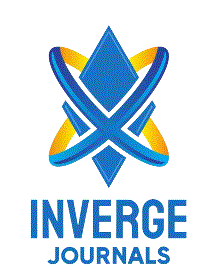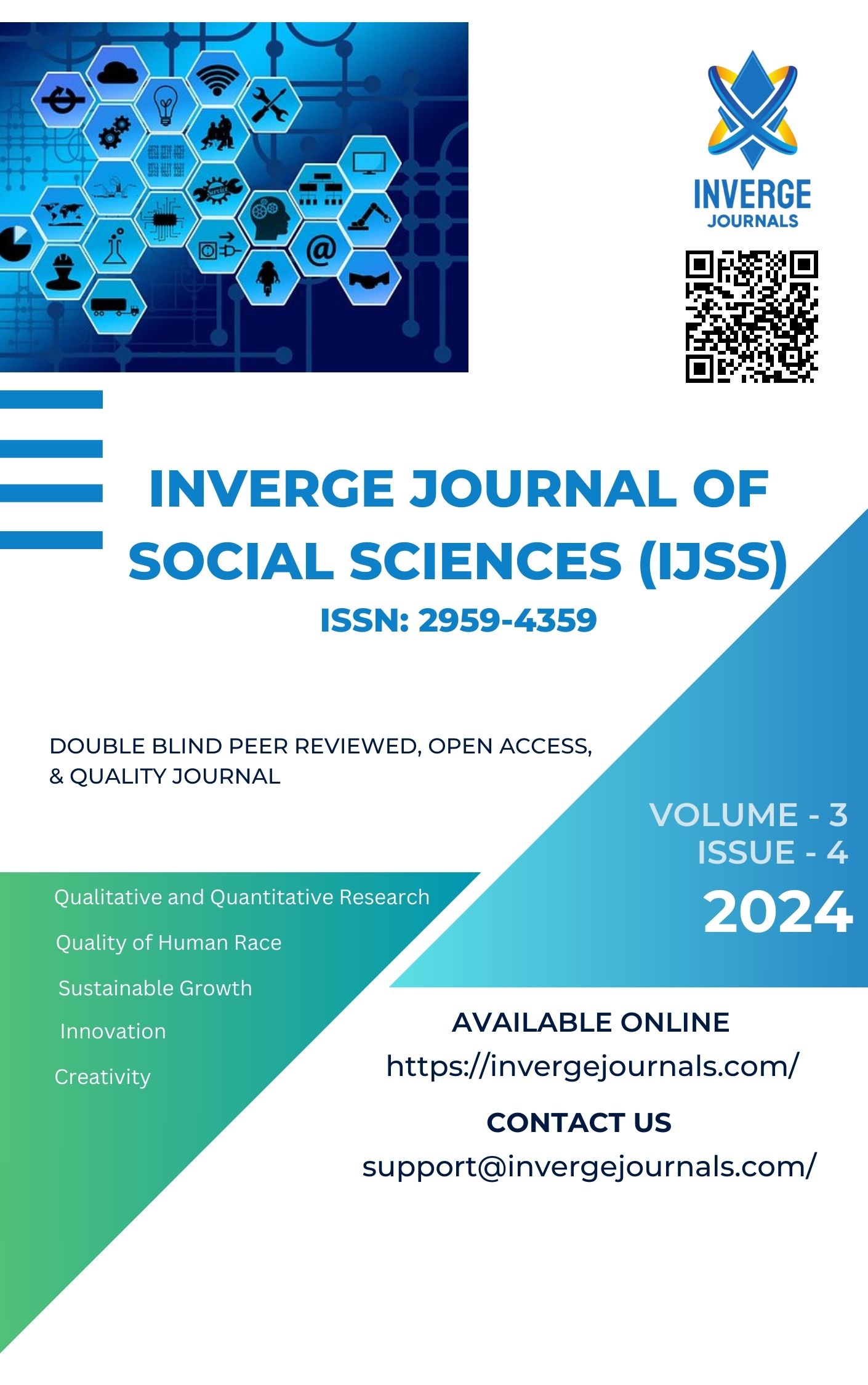A Critical Analysis of Infrastructure Facilities for Students of Madaris in Bahawalnagar District
DOI:
https://doi.org/10.63544/ijss.v3i4.133Keywords:
Madaris infrastructure, Academic performance, Educational challenges, Student safety, Policy reformsAbstract
This study addresses the significant gap in understanding the state of infrastructure facilities in Madaris (religious schools) in the Bahawalnagar District of Pakistan. While the importance of educational infrastructure in shaping student outcomes is well established, research focusing specifically on Madaris is limited. This study aims to assess the current infrastructure, identify challenges faced by these institutions, examine the impact of infrastructure on academic performance and personality development, and propose strategies for improvement. Using a quantitative approach, the study targeted 10 purposively selected Madaris, including 8 male and 2 female institutions providing residential facilities and Dars-e-Nizami courses. Using pre-tested questionnaires, a sample of one hundred students (eighty male, twenty female) were chosen and the researcher gathered data personally via face-to--face interaction. SPSS was used for the data analysis applying descriptive and inferential statistical methods. The results exposed notable shortcomings in categories including ventilation, sanitation, energy, and security in terms of infrastructure. The learning environment was shown to be hampered by poor access to basic facilities including drinking water and insufficient classroom space. Furthermore, influencing students' academic experiences were the absence of contemporary teaching resources including internet connection and AV aids. One critical challenge was also found to be security systems. Safety measures, student protection, and strengthening basic infrastructure such as classroom facilities were identified as major gaps in school supervision and need immediate reforms of infrastructure classical upgrades. The findings suggest that the personalization and general educational experiences of the students attending Madaris Centres are highly dependent on the investments made on these areas, which suggests that the politicians need to focus on infrastructural development of these institutions first.
References
Alam, J., Ashraf, M. A., Tsegay, S. M., & Shabnam, N. (2022). Early childhood between a rock and a hard place: Early childhood education and students’ disruption in Khyber Pakhtunkhwa province, Pakistan. International Journal of Environmental Research and Public Health, 19(8), 4486. https://doi.org/10.3390/ijerph19084486
Anjum, U. (2017). Assessing the need of modern education in madrassah system: A case study of Madaris in Lahore. Arts and Social Sciences Journal, 8(4). https://doi.org/10.4172/2151-6200.1000286
Asif, M., Pasha, M. A., Mumtaz, A., & Sabir, B. (2023). Causes of Youth Unemployment in Pakistan. Inverge Journal of Social Sciences, 2(1), 41–50. https://doi.org/10.63544/ijss.v2i1.21
Azad, O. (2024). Using Communicative Language Teaching to Teach English as a Second Language to College Students. Inverge Journal of Social Sciences, 3(1), 28–44. https://doi.org/10.63544/ijss.v3i1.70
Barrett, P., Treves, A., Shmis, T., Ambasz, D., & Ustinova, M. (2018). The impact of school infrastructure on learning: A synthesis of the evidence. World Bank. https://doi.org/10.1596/978-1-4648-1378-8
Beauregard, M., & Ayer, S. (2019). Leveraging previously reported research to create a decision support tool for institutional facility maintenance. Journal of Facilities Management, 17(3), 249–266. https://doi.org/10.1108/JFM-08-2018-0051
Calam, A., Yakub, S., Nazaruddin, I., Mahmud, R., & Halim, A. (2022). Learning character of early childhood students in elementary schools through utilization of facilities and infrastructure. Jurnal Obsesi: Jurnal Pendidikan Anak Usia Dini, 6(4), 3326–3338. https://doi.org/10.31004/obsesi.v6i4.2309
Cheryan, S., Ziegler, S., Plaut, V., & Meltzoff, A. (2014). Designing classrooms to maximize student achievement. Policy Insights from the Behavioral and Brain Sciences, 1(1), 4–12. https://doi.org/10.1177/2372732214548677
Ebekozien, A., Samsurijan, M., Aigbavboa, C., Firdaus, R., Azazi, N., & Amadi, G. (2022). Infrastructure development in higher institutions: The role of private organisations via unexplored expanded corporate social responsibility (ECSR). Property Management, 41(1), 149–168. https://doi.org/10.1108/PM-03-2022-0015
Eze, S., Chinedu-Eze, V., & Bello, A. (2018). The utilisation of e-learning facilities in the educational delivery system of Nigeria: A study of M-University. International Journal of Educational Technology in Higher Education, 15(1). https://doi.org/10.1186/s41239-018-0116-z
Fagbohunka, A., & Oladehinde, G. (2021). Infrastructural facilities and industrial development: An empirical investigation in the Lagos region. Economic and Regional Studies, 14(1), 26–43. https://doi.org/10.2478/ers-2021-0003
Hakim, A., Khan, B., & Ahmed, S. (2015). ICT integration in religious education: Challenges and opportunities in Pakistani Madaris. Journal of Educational Technology, 12(3), 45-60.
Hassan, R., Ali, S., & Khan, T. (2020). Rural school libraries in Pakistan: A study of resource availability and student access. International Journal of Library Science, 8(1), 45–60.
Herawati, S., Arafat, Y., & Puspita, Y. (2020). Manajemen pemanfaatan sarana dan prasarana pembelajaran [Management of learning facilities and infrastructure utilization]. Attractive Innovative Education Journal, 2(3), 21. https://doi.org/10.51278/aj.v2i3.68
Ivanenko, O. (2020). Implementation of risk assessment for critical infrastructure protection with the use of risk matrix. Sciencerise, 2, 26–38. https://doi.org/10.21303/2313-8416.2020.001340
Khan, S. U., & Hussain, I. (2020). Inequalities in health and health-related indicators: A spatial geographic analysis of Pakistan. BMC Public Health, 20(1), 1800. https://doi.org/10.1186/s12889-020-09870-4
LeBlanc, G., & Nguyen, N. (1997). Searching for excellence in business education: An exploratory study of customer impressions of service quality. International Journal of Educational Management, 11(2), 72–79. https://doi.org/10.1108/09513549710163961
Mangondato, S. (2021). Challenges of Madaris educational system in educating the youth in the Bangsamoro Autonomous Region in Muslim Mindanao, Philippines. Journal of Social and Political Sciences, 4(1). https://doi.org/10.31014/aior.1991.04.01.259
Mirza, M. S., & Rashid, S. (2024). Effect of Online Cooperative Learning on Students’ Academic Achievement at Higher Education Level. Inverge Journal of Social Sciences, 3(2), 1–10. https://doi.org/10.63544/ijss.v3i2.77
Nasution, M. (2022). Planning of facilities and infrastructure in Islamic education. Journal of Islamic Education El Madani, 1(1). https://doi.org/10.55438/jiee.v1i1.14
Pakpahan, P., & Hidayati, W. (2021). Implementation of total quality management in facilities to improve institution quality school. Manageria: Jurnal Manajemen Pendidikan Islam, 6(1), 97–124. https://doi.org/10.14421/manageria.2021.61-07
Palei, T. (2015). Assessing the impact of infrastructure on economic growth and global competitiveness. Procedia Economics and Finance, 23, 168–175. https://doi.org/10.1016/S2212-5671(15)00322-6
Pangestu, S., & Hariri, H. (2022). Management of facilities and infrastructure in improving the learning process. Jurnal Humaniora dan Ilmu Pendidikan, 2(1), 43–49. https://doi.org/10.35912/jahidik.v2i1.1647
Qamar, K., Nchasi, G., Mirha, H. T., Siddiqui, J. A., Jahangir, K., Shaeen, S. K., ... & Essar, M. Y. (2022). Water sanitation problem in Pakistan: A review on disease prevalence, strategies for treatment and prevention. Annals of Medicine and Surgery, 82, 104709. https://doi.org/10.1016/j.amsu.2022.104709
Qamar, M. S., & Nawaz, M. H. (2021). The impact of classroom environment on students’ learning. Pakistan Languages and Humanities Review, 5(2), 210–219.
Rahman, A., Warsah, I., & Murfi, A. (2020). Islamic education system in Singapore: Current issues and challenges. Jurnal Pendidikan Islam, 8(2), 197–222. https://doi.org/10.14421/jpi.2019.82.197-222
Shahid, N., Asif, M., & Pasha, A. (2022). Effect of internet addiction on school-going children. Inverge Journal of Social Sciences, 1(1), 13–55. https://doi.org/10.63544/ijss.v1i1.3
Siswanto, E., & Hidayati, D. (2020). Management indicators of good infrastructure facilities to improve school quality. International Journal of Educational Management and Innovation, 1(1), 69. https://doi.org/10.12928/ijemi.v1i1.1516
Sugiyono, S. (2021). The evaluation of facilities and infrastructure standards achievement of vocational high school in the special region of Yogyakarta. Jurnal Penelitian dan Evaluasi Pendidikan, 25(2). https://doi.org/10.21831/pep.v25i2.46002
Taher, M., & Qureshi, S. (2021). Impact of infrastructure on learning outcomes in Pakistani schools. Journal of Educational Development, 15(2), 112–130. https://www.journalofeducationaldevelopment.com
Tariq, J., Abrar, D. F., & Zia-ur-Rehman, D. M. (2024). High Performance Work Systems, Employees Retention, and Employees Performance in Higher Education of Business Schools in Pakistan. Journal of Business Insight and Innovation, 3(1), 1–10.
Ullah, M. (2020). Parents’ perceptions about the economic adjustment of secondary level schools and Deeni Madaris students’ in society. Journal of Development and Social Sciences, 1(II), 13–24. https://doi.org/10.47205/jdss.2020(1-II)2
Uzooba, H., Nadeem, M., Adil, S., & Malik, M. I. (2020). Inequalities in access to safe drinking water and improved sanitation based upon household socio-economic factors within districts of Punjab. Punjab Economic Research Institute. https://www.peri.punjab.gov.pk
Williamson, B. (2018). The hidden architecture of higher education: Building a big data infrastructure for the ‘smarter university’. International Journal of Educational Technology in Higher Education, 15(1). https://doi.org/10.1186/s41239-018-0094-1
Yousafzai, A. K., Rasheed, M. A., Rizvi, A., Shaheen, F., Ponguta, L. A., & Reyes, C. R. (2018). Effectiveness of a youth-led early childhood care and education programme in rural Pakistan: A cluster-randomised controlled trial. PLOS ONE, 13(12), e0208335. https://doi.org/10.1371/journal.pone.0208335
Downloads
Published
How to Cite
Issue
Section
Categories
License
Copyright (c) 2024 Muhammad Rafiq-uz-Zaman

This work is licensed under a Creative Commons Attribution-NonCommercial-ShareAlike 4.0 International License.
The work is concurrently licensed under a Creative Commons Attribution-NonCommercial-ShareAlike 4.0 International License, which permits others to share the work with an acknowledgement of the authorship and the work's original publication in this journal, while the authors retain copyright and grant the journal the right of first publication.









